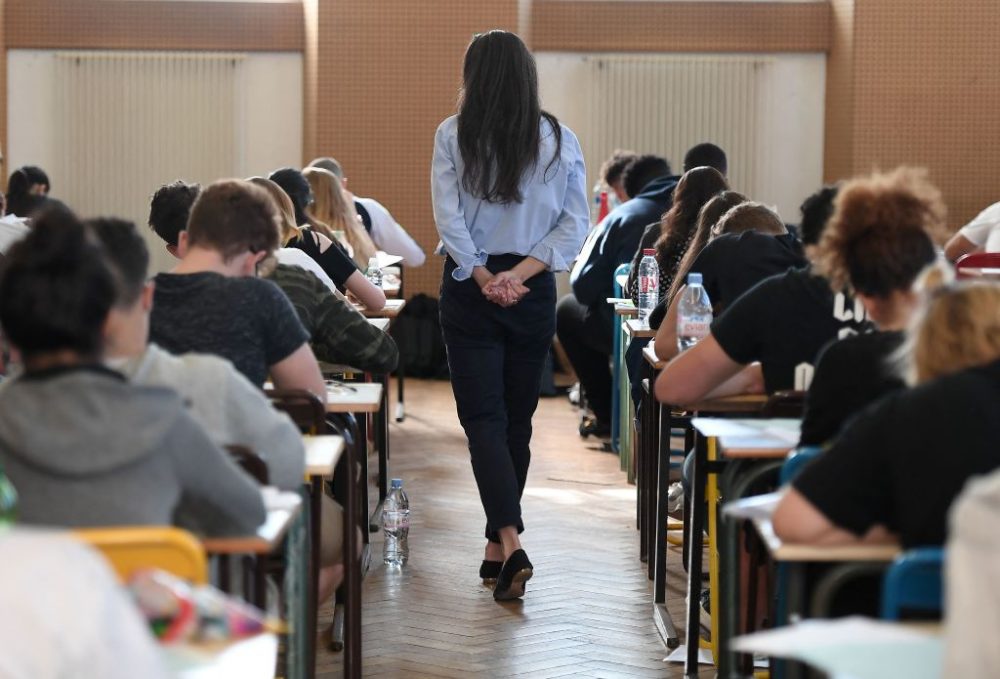Fear is gripping the American public health and media establishments: they are losing control. States are belatedly (and far too tentatively) easing their coronavirus lockdowns, many without having met the absurd CDC benchmarks for doing so. Customers are joyfully returning to previously shuttered restaurants and parks, some even discarding that symbol of subjugation: the outdoor mask.
The mainstream media and health experts are not going down without a fight, however; their newfound power over almost the entirety of human life has been too exhilarating to give up now. Their reaction to the current rebellion provides a glimpse of the strategies that will be deployed during the much-hyped ‘second wave’ of infections this fall in order to shut the economy down again.
The extent of media panic became clear in mid-May. On May 15, CNN checked back in to Georgia, that blackguard state that had started reopening in April without expert pre-clearance, drawing a rebuke even from President Donald Trump. On April 21, Washington Post columnist Dana Milbank wrote that Georgia governor Brian Kemp was seeking to ‘turn his state into the place to die.’
Three weeks later, things were not looking good for the proponents of indefinite shutdown. ‘Since reopening late last month,’ CNN glumly reported, ‘Georgia hasn’t seen a spike in coronavirus cases.’ Time to change the standards for success: ‘But there also hasn’t been a significant decrease in new case counts,’ the cable channel added. New case counts had decreased — 6 percent over a week — but the drop just wasn’t ‘significant,’ by CNN’s lights. Moreover, CNN pointed out, that downward trend was ‘unsteadily downward,’ as if any set of data does not have daily fluctuations.
Case counts are influenced by rates of testing, but CNN did not suggest that Georgia had been testing less since reopening. Nevertheless, under this new standard of ‘significant’ and unbroken case count decline, Georgia’s reopening had to be seen as a failure.
The next day, MSNBC addressed the national decline in new cases. The trend was ‘downwards,’ an on-air host admitted, but the ‘numbers were still horrible.’ That MSNBC would define any numbers as ‘horrible’ was a foregone conclusion; the issue is where those numbers are heading. In light of that downward trend, it was time to trot out what was then the media’s favorite doomsday prediction. The US is facing the ‘darkest winter in modern history,’ the MSNBC host reminded viewers, quoting the former director of a federal biomedical research agency, who had testified at a House subcommittee hearing two days earlier.
On May 17, the New York Times crushed its competition with the most audacious effort yet to turn good news into bad. ‘NEW CASES IN US SLOW, POSING RISK OF COMPLACENCY,’ read the lead headline in the print edition. Sub headlines further limned the gloomy picture: ‘TRAJECTORY UNCERTAIN,’ ‘Spikes Feared As the Very Steps That Curbed the Virus Are Lifted.’ Do not stop being fearful, in other words. While the virus risk may go down, complacency risk replaces it, leaving us as threatened as before. The only proper posture is to shelter in place permanently.
The body of the Times’s story drove home the dangerous new reality. The nation had reached a ‘perilous moment,’ the paper alleged, since businesses were reopening ‘despite the risk of a resurgence.’ So it is ‘perilous’ when cases rise, and ‘perilous’ when they fall. One of the Times’s preferred epidemiologists, Columbia University’s Jeffrey Shaman, conceded that the decline ‘is something good to see.’ But what we are also seeing, Shaman said, is a ‘lot of places right on the edge of controlling the disease.’ The fact that some jurisdictions are registering sharp case declines while others are registering less or no decline is hardly a reason for fear. Differing points on the curve at any given time are to be expected.
The Times managed to eke out another cause for concern: communities that have succeeded in controlling their cases ‘have little idea how long [that success] will last.’ Ignorance of the future is the condition of all non-omniscient beings. Now, however, uncertainty about the future is a further reason that the reopenings were premature.
It wasn’t until the article was wrapping up that the Times got around to reporting that, oh, by the way, daily deaths are also declining. Deaths are the criterion that people care most about and one that is not influenced by testing rates. For the Times’s reporters, however, that drop is an afterthought.
Bottom line: rising caseloads and deaths mean that the lockdowns must continue, but so do falling caseloads and deaths, to avoid the ‘risk of complacency.’
Expect the following additional strategies this summer, besides the creative massaging of good tidings into bad:
–Hiding the numbers. We will hear about ‘surges,’ ‘spikes,’ and the ‘ballooning of the case count,’ without learning the numbers behind those spikes. A state will be reported as being in the grip of an exponential outbreak; if that outbreak meant going from five new cases one day to nine new cases three days later, say, those details will be omitted.
–Specious parallelism. This strategy combines ‘hide the numbers’ with the irrelevant ‘as’ construction: President Trump is calling for an end to the lockdowns even as there are ‘worrisome reports of spikes in infections in countries like China, South Korea and Germany,’ the New York Times put it on May 12.
–Coy double negatives and strained constructions. The risk of outdoor transmission is ‘not zero,’ according to a lecturer at the Yale Jackson Institute for Global Affairs quoted by the New York Times on May 16. (To be precise, outdoor infection accounted for 0.01 percent of 7,300 cases in China.) Caseloads are not rising but remain ‘steadily worrisome.’
–Scary new models, revisionist models, and the continuing citation of discredited old models.
–The conflation of new cases with new deaths, and no information about the recovery rate.
–Concealing the locus of mortality. This is the mother of all fear-mongering strategies. Every coronavirus story that does not acknowledge the prevalence of nursing home deaths among coronavirus decedents is a story that deceives the public. It is now impossible to attribute the lack of such information to mere oversight. Preliminary estimates of the share of nursing home deaths in the national count range from 35 percent to over 50 percent. At the state level, the share of nursing home deaths among coronavirus deaths is 80 percent in Minnesota and West Virginia; 73 percent in Rhode Island; 66 percent in Pennsylvania; 59 percent in Massachusetts; 58 percent in Virginia; 57 percent in Colorado; and 55 percent in Connecticut. Abroad, 57 percent of all coronavirus deaths in Spain were in nursing homes; 53 percent in Italy; and 50 percent in Sweden. Add to those deaths people outside of nursing homes who are also elderly and/or infirm with serious preexisting co-morbidities and you account for nearly all coronavirus deaths. Neil Ferguson, director of the apocalyptic Imperial College model that triggered lockdowns in Great Britain and the US, has conceded that as many as two-thirds of all people who die of coronavirus in 2020 would have died by the end of the year anyway.
***
Get three months of The Spectator for just $9.99 — plus a Spectator Parker pen
***
The corollary of those usually suppressed facts is the equally suppressed fact that the middle-aged and the young are at minimal risk from the coronavirus. The median age of coronavirus death in most countries is 80. Political analyst Phil Kerpen found that Pennsylvania has more COVID-19 deaths among people over 100 than among people under age 45, more deaths over age 95 than under age 60, and more deaths over 85 than under 80. An analysis of Spanish data found that the fatality rate for the infected was 0.052 percent for people under 60 — half of that for the seasonal flu. The typical coronavirus case is asymptomatic, and appears to have no lasting effect on the sufferer. Recent outbreaks in the US have occurred overwhelmingly in nursing homes, prisons, and meat packing plants. And yet, virus coverage leaves the reader thinking that everyone is at equal risk.
When the campaign for re-lockdown begins, political leaders and the public should respond: thank you, but we are not going to make that mistake again. The unintended (to give you the benefit of the doubt) consequences of lockdowns have dwarfed in their malignity anything that the coronavirus could have inflicted, whether measured by lost and stunted lives or by the crushing of hope and enterprise. The coming depression will reduce global life expectancy more than the coronavirus ever could have. The infirm elderly — our parents — deserve our love and respect. We will focus on protecting them, but we will not shut down the economy to do so, because without economic life there is no public health. There will be more deaths from the coronavirus, as from other things. We will carry on, having relearned the necessity of balancing the benefits of any course of action against its costs. And we will remove from our daily repartee the injunction to ‘stay safe’ as an insult to human striving.

























